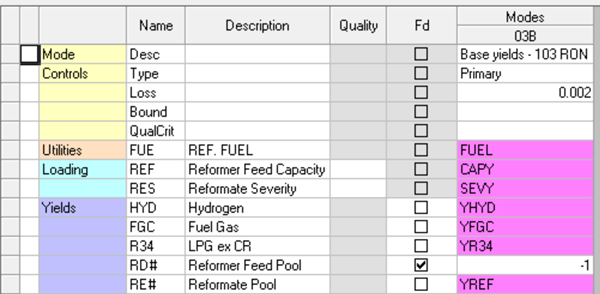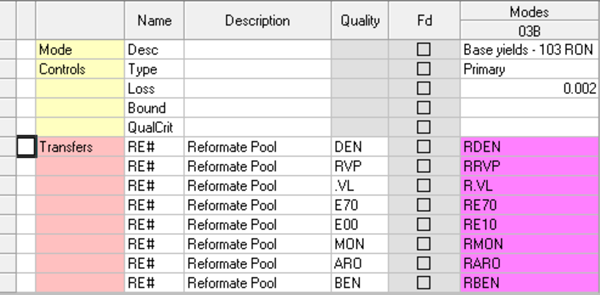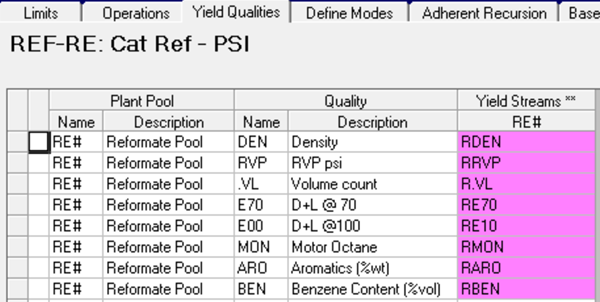I was recently asked why the marginal value on the total amount of a pooled stream was not always the same as that of itself as a component.

When you see a pool whose component is only itself, you know you are looking at a plant pool, something that is a made as a process unit yield.

Although the input data and the report make it look like the process unit vector is connected to the pool material balance row, it works by creating a dummy stream that comes off the unit and blends into the pool via a component to product vector. This dummy stream – always named #(STR;1-2), so #RE here – always carries the quantity - weight or volume according to the model balance basis – into the blending. But, unlike a normal blending component it doesn’t necessarily carry quality information.
If the unit is written with quality transfer rows [TABLE 2xx.3] , then some of the quality information passes directly into the pool quality balance rows via the process unit vectors.

Where a transfer factor has a PUP code, like these do, and the quality transfer value is coming from the non-linear simulator calculations, the dummy stream’s blend value is set to zero. The dummy stream will only contribute a quality value where there is no such transfer factor (making the initial estimate for the pool in the blend data a constant.). So the component is really the dummy stream #RE, not the pool RE#, and it has, for example, no RVP and no MON. If you had another ton of component to blend in to the pool, it would reduce the RVP – which would probably be a good thing – but would also reduce the motor octane, which would be a bad thing. (RON has no transfer factor – but is not a constant because it is being used as an input variable to the simulator to indicate severity.). The net effect of gaining or losing by reducing the qualities will determine how the marginal value of the dummy stream compares to that of the actual pool. It might even be higher than the final pool.
Sometimes, however, you might see that a plant pool and its component have the same values.

This is most likely an indication that the component and pool have the same qualities (although it could also mean that the value of the stream is entirely in its quantity). While the qualities could all be the same because there are no adjustments on the unit so all are constant, it is more likely that they are passed from the simulator via the Yield Qualities method [TABLE 2xx.5].

When this method is used the quality is passed to the pool on the dummy stream blend vector, along with the constant ones – but the values are updated to reflect the simulator output on each recursion pass. This method of quality transfer has the advantage of not needing the yield scaling factor that is used to calculate transfer factors. You can also ask the program to do the blend basis scaling and index conversions, so the PUPs can be calculated as just quality, making the simulator much easier to set up.
Thanks to Pierre Meyniel for the question.
From Kathy's Desk, 31st August 2018.
Comments and suggestions gratefully received via the usual e-mail addresses or here.
You may also use this form to ask to be added to the distribution list so that you are notified via e-mail when new articles are posted.